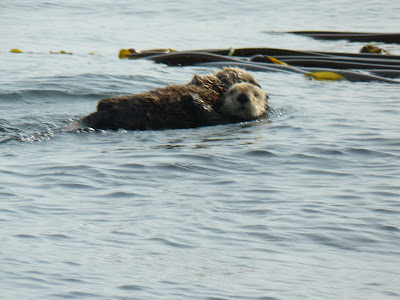Well, I was only back from Canada a couple of weeks and my riding mates John, Mike and I decided to take advantage of the beautiful weather and ride to Alice Springs and Uluru (Ayers Rock to the culturally insensitive) We left Adelaide on September 9.
Mike and me having a hard earned drink on arrival at "Spuds Roadhouse" in Pimba, South Australia. Note! Spuds is Pimba.
John and Mikes rear at the Range Lookout between Port Augusta and Pimba. Note the lush roadside growth, normally this country is pretty barren but the last three years have been quite wet.
Dry salt Lake Gairdner between Port Augusta and Woomera.
Evidence that South Australia is the driest state in the world. 90km south of Coober Pedy.
An old dry blower used to evacuate mining rubble from underground when mining for Opal.
The entrance to the Radeka Underground Motel in Coober Pedy, famous for its Opal. Note the vents in the rock face.
One double bed and four bunks, all we need now is a pick and shovel to find the Opal.
Glendambo, north of Coober Pedy
Mount Connor with bush fire, about 100km east of Uluru in the Northern Territory. The difference in the geology of the three rock formations in this area is like chalk from cheese.
Our campsite at Yulara, the town just outside Uluru National Park.
Yours truly with the mystical Uluru at sunset. Uluru is revered in Aboriginal legend and it is easy to understand why when seen for the first time as the light changes during sunset.
Uluru is formed of red sandstone and rises 348m above the surrounding area.
Approximately 25km west of Uluru lie the Kata Tjuta or Olgas, as was there name in modern times. These strange formations are formed entirely of a conglomerate and rise to a maximum height of 546m above the surrounding area.
Sunset behind Kata Tjuta.
From Uluru we retraced our track back to the junction of the Lasseter Highway and Luritja Road where Mike left us to head back home via the Oodnadata Track. John and I rode north to Watarrka (Kings Canyon)
Cliffs at the entrance to Kings Canyon.
Kings Canyon walls
Creek bed in the Canyon
Dead end of the Canyon
The Old.
and the New
Leaving Kings Canyon
A Port Lincoln Parrot in our camp site at Kings Creek Station.
A road train leaving Alice Springs
Alice Springs from the Lookout.
West MacDonnell Range. We rode 150km west of Alice Springs to visit several of the renowned gaps in the range.
Simpsons Gap
North end of Simpsons Gap
Stanley Chasm
Water hole in Stanley Chasm.
Cycads in the bed of Stanley Chasm.
Glen Helen Gorge
Permanent water hole in Glen Helen Gorge
Ormiston Gorge
Ormiston Gorge with people settling in to hear the Choir sing for the Alice Desert Festival. We came across this gathering quite by accident and stayed to listen for a while. It was a moving experience. We were 138km from alice Springs.
The choir preparing for the concert. The cliffs at the back formed a natural sound shell.
A Rock Wallaby settles in to listen to the concert.
From Alice Springs John and I rode back to Adelaide, 1650km, in three days. We are away ten days.






























































